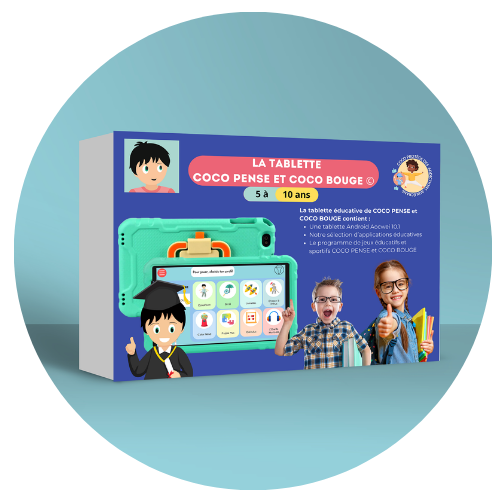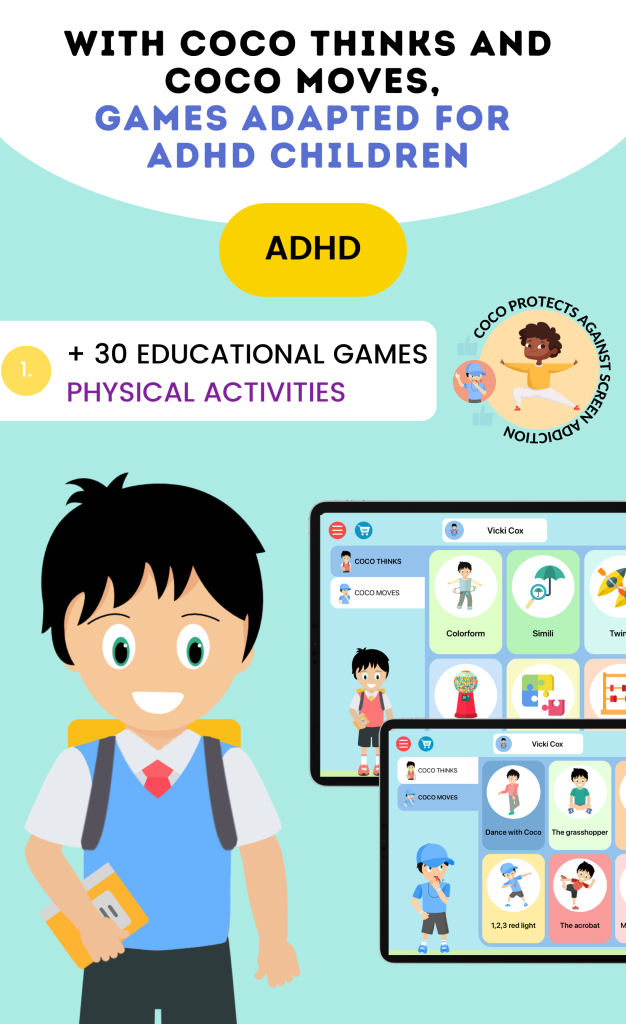The complexity of combined ADHD lies in its dual nature; while some may excel in creative thinking and problem-solving, they may simultaneously grapple with disorganization and distractibility. Understanding combined ADHD requires a comprehensive approach that considers the unique experiences of each individual. Symptoms can vary widely, making it essential for caregivers, educators, and mental health professionals to recognize the specific challenges faced by those with this diagnosis.
For instance, a child with combined ADHD may find it difficult to sit still during class while also struggling to complete homework assignments on time. This duality can lead to frustration and low self-esteem, as individuals may feel misunderstood or labeled as “lazy” or “disruptive.” By fostering an environment of empathy and support, we can help those with combined ADHD navigate their daily lives more effectively.
Medication and Therapy Options for Combined ADHD
Managing combined ADHD, which includes symptoms of both inattention and hyperactivity/impulsivity, often requires a comprehensive treatment plan that integrates both medication and therapy. This multifaceted approach addresses the neurological and behavioral aspects of the disorder, maximizing the chances for improved functioning and quality of life.
1. Medication
Medication remains a cornerstone in the treatment of combined ADHD, especially when symptoms significantly interfere with daily activities, learning, or relationships.
-
Stimulant medications such as methylphenidate (e.g., Ritalin, Concerta) and amphetamines (e.g., Adderall, Vyvanse) are most commonly prescribed.
-
These medications work by increasing the levels of neurotransmitters like dopamine and norepinephrine in the brain.
-
This biochemical effect enhances attention, reduces impulsivity, and controls hyperactive behaviors.
-
Stimulants are fast-acting and have been shown in numerous studies to improve focus and executive function in individuals with ADHD.
-
-
Non-stimulant medications may be considered if stimulants are ineffective, cause adverse side effects, or if there are co-existing health concerns.
-
Examples include atomoxetine (Strattera) and guanfacine (Intuniv).
-
These medications work differently but can also help improve attention and impulse control.
-
-
Monitoring and Adjustment:
-
Medication management requires close collaboration with healthcare providers.
-
Regular follow-ups ensure optimal dosing and monitor for side effects such as sleep disturbances, appetite changes, or mood fluctuations.
-
It’s important to tailor medication plans to the individual’s evolving needs over time.
-
2. Therapy Options
Medication alone is rarely sufficient. Behavioral and psychological therapies complement pharmacological treatment by targeting skill development and emotional well-being.
Cognitive-Behavioral Therapy (CBT)
-
CBT is highly effective in helping individuals with combined ADHD develop coping strategies to manage symptoms.
-
Through CBT, individuals learn to:
-
Recognize and modify negative or unhelpful thought patterns.
-
Identify environmental or emotional triggers that exacerbate symptoms.
-
Implement practical tools for time management, organization, and problem-solving.
-
-
CBT also addresses co-occurring issues such as anxiety or depression that frequently accompany ADHD.
Family Therapy
-
Family therapy provides a supportive space to improve communication and understanding within the household.
-
It helps family members learn about ADHD’s challenges and develop strategies to reduce conflict.
-
Supportive family dynamics are critical for reinforcing treatment gains and creating a nurturing environment.
Other Therapeutic Approaches
-
Behavioral therapy focuses on reinforcing positive behaviors and discouraging problematic ones through reward systems and structured routines.
-
Social skills training may be beneficial, especially for children and adolescents struggling with peer relationships.
-
Coaching or skills training can assist older adolescents and adults in developing organizational and planning skills.
3. Combining Medication and Therapy
The integration of medication with therapy offers a balanced, holistic approach that addresses both the biological and psychosocial aspects of ADHD.
-
Medication helps regulate neurochemical imbalances, enabling better focus and impulse control.
-
Therapy teaches practical life skills, emotional regulation, and problem-solving techniques.
-
Together, they provide a framework that supports both symptom management and long-term personal growth.
Conclusion
For individuals with combined ADHD, a tailored treatment plan that combines medication and therapy typically yields the best outcomes. Collaborative care, involving healthcare professionals, families, and educators, ensures that treatment adapts to changing needs and supports ongoing development. Through this integrated approach, individuals with ADHD can enhance their functioning and lead fulfilling lives despite the challenges posed by the disorder.
Creating a Structured Environment
Establishing a structured environment is a fundamental strategy for supporting individuals with combined ADHD. Such an environment provides the predictability, organization, and clarity that these individuals often require to function optimally and reduce the cognitive overload that can lead to frustration and distraction.
1. Importance of Structure and Routine
A consistent routine helps to build a sense of stability and control, which can:
-
Reduce anxiety caused by unpredictability or sudden changes.
-
Improve time management by breaking the day into clearly defined segments.
-
Reinforce positive habits by encouraging regular engagement in necessary tasks.
For example, setting specific times for homework, chores, meals, and leisure helps individuals anticipate what comes next, making transitions smoother and reducing procrastination.
2. Clear Expectations and Consistency
Communicating clear, simple expectations allows individuals with ADHD to understand what is required of them. This clarity reduces confusion and the likelihood of misunderstandings or conflicts.
-
Use concise instructions and repeat or write them down if necessary.
-
Reinforce expectations with consistent consequences and rewards, supporting behavior regulation.
-
Encourage regular check-ins to review progress and adjust plans as needed.
3. Designated Spaces
Creating specific areas dedicated to different activities helps the brain associate environments with particular functions, enhancing focus and relaxation.
-
Workspaces should be quiet, well-lit, and free from unnecessary distractions.
-
Relaxation zones can be comfortable areas where the individual can unwind without work-related stimuli.
-
Keep materials and tools needed for tasks (e.g., school supplies, work documents) organized and easily accessible in the designated work area.
4. Visual Aids and Organizational Tools
Visual supports are invaluable for helping individuals with combined ADHD manage their responsibilities and stay on track.
-
Calendars and planners to schedule appointments, deadlines, and routines.
-
Checklists for daily tasks, homework assignments, or chore completion, providing a clear overview of what needs to be done.
-
Color-coded systems can categorize tasks by priority or type, making complex schedules easier to navigate.
-
Digital reminders on smartphones or tablets can supplement physical tools for added reinforcement.
These aids foster independence by empowering individuals to monitor and manage their own schedules.
5. Reducing Clutter and Minimizing Distractions
Physical clutter can overwhelm attention and increase distractibility. A decluttered, tidy environment promotes calmness and concentration.
-
Regularly organize and purge unnecessary items from work and living spaces.
-
Limit access to distracting devices or objects during focused work periods.
-
Use storage solutions like bins, shelves, or drawer organizers to keep items orderly.
6. Tailoring the Environment to Individual Needs
Each person with combined ADHD has unique preferences and challenges, so the environment should be customized accordingly.
-
Experiment with different organizational systems to find what works best.
-
Adjust lighting, seating, or noise levels to optimize comfort and attention.
-
Involve the individual in creating their environment to increase ownership and adherence.
Conclusion
By creating a structured, predictable, and supportive environment, caregivers and individuals with combined ADHD can significantly enhance daily functioning and reduce stress. This environment acts as a foundation that nurtures focus, responsibility, and self-confidence, helping those affected navigate the complexities of their day-to-day lives with greater ease and success.
Implementing Behavioral Strategies
Behavioral strategies play a vital role in effectively managing the symptoms of combined ADHD by promoting positive behaviors and reducing negative or disruptive actions. These techniques help individuals build self-regulation skills, improve social interactions, and foster a sense of control over their behaviors.
1. Positive Reinforcement
Positive reinforcement involves encouraging desired behaviors by providing immediate rewards or praise, which increases the likelihood that these behaviors will be repeated.
-
Types of rewards can vary widely and may include verbal praise, tokens, extra playtime, or small privileges.
-
Rewards should be specific and meaningful to the individual to maximize motivation.
-
Reinforcing incremental progress (even small achievements) helps build confidence and momentum.
-
For example, praising a child who completes homework without reminders reinforces their responsibility and independence.
2. Clear and Consistent Consequences
Establishing clear consequences for undesired behaviors helps individuals understand the boundaries and the impact of their actions.
-
Consequences should be fair, predictable, and consistently applied to be effective.
-
Use natural or logical consequences that directly relate to the behavior (e.g., if a toy is thrown, it is temporarily taken away).
-
Avoid punitive or harsh punishments, as they may increase frustration or resentment.
-
Consistent consequences help reinforce cause and effect, encouraging better decision-making.
3. Setting Boundaries and Expectations
Clearly defined rules and expectations provide structure and reduce confusion.
-
Communicate rules in simple, straightforward language.
-
Use visual aids like charts or lists to remind individuals of expected behaviors.
-
Review expectations regularly to reinforce understanding and compliance.
4. Behavior-Specific Interventions
Tailor strategies to address particular behavioral challenges.
-
For example, a “talking stick” system teaches turn-taking by allowing only the person holding the stick to speak, helping reduce interruptions.
-
Use time-outs or brief breaks to manage overstimulation or aggressive behaviors.
-
Implement cueing systems, such as hand signals or verbal prompts, to gently redirect attention or behavior.
5. Creating Predictable Routines
Consistent daily routines reduce uncertainty and help individuals anticipate what’s expected.
-
Predictability lowers anxiety and supports smoother transitions between activities.
-
Combine routines with reinforcement strategies to build positive habits over time.
6. Encouraging Self-Monitoring and Reflection
Over time, individuals can learn to recognize and regulate their own behaviors.
-
Teach simple self-monitoring techniques, like checking off completed tasks or using a feelings chart.
-
Encourage reflection by discussing what behaviors worked well and which ones could be improved.
-
Self-awareness fosters independence and long-term success in managing ADHD symptoms.
Conclusion
By implementing clear, consistent, and positive behavioral strategies, caregivers and educators can help individuals with combined ADHD develop crucial self-regulation skills. These approaches not only reduce disruptive behaviors but also empower individuals to take ownership of their actions, leading to improved social interactions, academic success, and overall well-being.
Developing Time Management Skills
Time management often presents a significant challenge for individuals with combined ADHD, as difficulties with attention, planning, and impulse control can impair their ability to prioritize tasks and accurately estimate the time needed for activities. Developing effective time management skills is crucial to improving productivity, reducing stress, and fostering greater independence.
1. Breaking Tasks into Smaller Steps
Large or complex tasks can feel overwhelming, leading to procrastination or avoidance. Teaching individuals to break down projects into smaller, manageable steps helps to:
-
Make tasks feel more achievable.
-
Provide clear, actionable goals.
-
Build a sense of accomplishment and motivation with each completed step.
For example, instead of “write a report,” break the task into stages like “research topic,” “create an outline,” “write introduction,” and so on.
2. Using Timers and Time Management Tools
Incorporating timers or dedicated apps can help individuals stay aware of the passage of time and maintain focus.
-
Tools like Pomodoro timers encourage working in focused intervals (e.g., 25 minutes) followed by short breaks.
-
Apps designed for ADHD-friendly time management can send reminders, track progress, and help plan daily activities.
-
Setting specific time limits for tasks encourages efficiency and helps reduce the tendency to get lost in details or distractions.
3. Implementing Time Blocking
Time blocking is a technique where the day is divided into distinct segments dedicated to particular activities or tasks.
-
This approach creates a structured routine, reducing decision fatigue about what to do next.
-
Allocating fixed periods for work, breaks, leisure, and self-care helps balance productivity with rest.
-
Time blocks should be realistic and flexible enough to accommodate unexpected interruptions or changes.
4. Prioritization Skills
Teaching individuals to prioritize tasks by urgency and importance can greatly improve time management.
-
Encourage use of tools such as the Eisenhower Matrix (urgent vs. important) or simple to-do lists ranked by priority.
-
Focus on completing high-priority items first to prevent last-minute stress and missed deadlines.
5. Visual Scheduling
Visual schedules—such as calendars, planners, or whiteboards—provide clear, external reminders of how time is allocated.
-
Visual representations of time help with understanding the flow of the day and upcoming commitments.
-
Use color coding or symbols to distinguish between task types and priorities.
6. Building Awareness and Self-Reflection
Helping individuals develop time awareness—recognizing how long tasks actually take versus their estimates—is essential.
-
Encourage regular self-reflection on time spent versus planned.
-
Adjust schedules and expectations based on these reflections to improve future planning.
Conclusion
By teaching practical time management skills tailored to the unique challenges of combined ADHD, individuals gain greater control over their daily schedules. These strategies reduce overwhelm, improve productivity, and foster a sense of accomplishment and independence. Over time, effective time management supports success in academic, professional, and personal domains.
Building Social Skills
Social interactions can pose significant challenges for individuals with combined ADHD, often due to impulsivity, difficulty interpreting social cues, and challenges with self-regulation. Developing strong social skills is therefore a critical aspect of managing the condition and improving overall quality of life.
1. Role-Playing Exercises
Role-playing provides a safe and structured way to practice social behaviors and responses.
-
Individuals can rehearse common social scenarios such as starting conversations, taking turns, handling disagreements, or responding to feedback.
-
Practicing these interactions helps increase confidence and reduce anxiety in real social settings.
-
Role-playing also offers opportunities to reflect on behaviors and explore alternative responses, promoting self-awareness and adaptability.
2. Social Skills Groups
Participating in social skills groups offers a supportive environment where individuals can learn and practice interpersonal skills.
-
Facilitators guide group members through lessons on active listening, empathy, body language, and conflict resolution.
-
Group settings encourage peer feedback and provide a sense of community, reducing feelings of isolation.
-
These groups often use games and activities to make learning social skills engaging and enjoyable.
3. Team Activities and Structured Social Settings
Engagement in team sports, clubs, or hobby groups provides real-life opportunities to build social connections.
-
These activities encourage collaboration, turn-taking, and communication within a structured framework.
-
The presence of coaches or mentors offers immediate guidance and reinforcement.
-
Regular participation helps individuals develop friendships, practice patience, and learn about group dynamics.
4. Teaching Social Cue Recognition
Improving the ability to read and respond to social cues is essential.
-
Use of visual aids or social stories can illustrate facial expressions, tone of voice, and body language.
-
Video modeling—watching and analyzing social interactions—can be an effective teaching tool.
-
Encourage mindfulness practices to enhance awareness of others’ emotions and reactions.
5. Encouraging Positive Social Behaviors
Reinforce behaviors such as sharing, cooperation, and respectful communication through praise and rewards.
-
Positive reinforcement helps individuals internalize appropriate social habits.
-
Setting clear expectations and providing gentle reminders support ongoing skill development.
Conclusion
Focusing on social skills development equips individuals with combined ADHD to navigate interpersonal relationships more successfully. Through role-playing, social groups, structured activities, and targeted teaching, they can build meaningful connections, reduce social anxiety, and enhance their overall well-being. Support from caregivers, educators, and peers plays a vital role in fostering these essential skills.
Managing Impulsivity and Hyperactivity
Impulsivity and hyperactivity are core symptoms of combined ADHD that can significantly interfere with daily life, relationships, and overall well-being. Effectively managing these symptoms is essential for improving self-control, reducing frustration, and fostering better social and academic outcomes.
1. Mindfulness and Self-Regulation Techniques
Teaching mindfulness practices can enhance self-awareness and promote thoughtful responses instead of impulsive reactions.
-
Deep breathing exercises encourage calmness by slowing the heart rate and focusing attention on the present moment.
-
Simple meditation techniques, such as guided imagery or body scans, help individuals recognize physical and emotional cues that precede impulsive behavior.
-
Practicing mindfulness regularly builds the ability to pause and reflect before acting, improving decision-making and emotional regulation.
-
Incorporate brief mindfulness breaks during the day to reset focus and reduce restlessness.
2. Physical Activity and Exercise
Regular physical activity is a powerful tool to manage hyperactivity and improve overall mental health.
-
Engaging in sports like soccer, swimming, or basketball provides structured physical outlets that channel excess energy constructively.
-
Activities such as dance, martial arts, or yoga combine physical movement with discipline and mindfulness, offering dual benefits.
-
Exercise increases the release of neurotransmitters like dopamine and serotonin, which support attention, mood regulation, and impulse control.
-
Aim for daily physical activity tailored to the individual’s interests and abilities to promote consistency and enjoyment.
3. Environmental Modifications
Creating an environment that minimizes triggers for impulsivity and hyperactivity can support better self-control.
-
Reduce sensory distractions such as noise or clutter in work or study areas.
-
Provide access to fidget tools or movement breaks to help regulate energy levels.
-
Establish clear and consistent routines to create predictability and reduce impulsive behaviors caused by uncertainty.
4. Behavioral Strategies
Using behavioral techniques can help shape and reinforce self-control.
-
Implement positive reinforcement for moments of self-restraint or calm behavior.
-
Set clear, consistent rules and consequences related to impulsive actions.
-
Teach and practice alternative behaviors, such as asking for a break instead of interrupting.
Conclusion
By combining mindfulness practices, regular physical activity, environmental adjustments, and behavioral strategies, individuals with combined ADHD can gain greater control over impulsivity and hyperactivity. These approaches not only reduce disruptive behaviors but also enhance emotional regulation, focus, and overall quality of life.
Seeking Support and Resources
Seeking support and accessing appropriate resources is a crucial part of managing combined ADHD for both individuals and their families. Connecting with others who understand the unique challenges of ADHD can provide emotional validation, practical advice, and a sense of community.
1. Support Groups and Online Communities
Engaging with support groups, whether in-person or online, offers valuable opportunities to share experiences and learn from others.
-
Support groups provide a safe space to discuss challenges, successes, and coping strategies.
-
Online forums and social media groups connect individuals and families across geographic boundaries, expanding access to diverse perspectives.
-
These communities often share recommendations for treatment options, educational tools, and lifestyle adaptations.
-
Emotional support from peers helps reduce feelings of isolation and empowers individuals to advocate for their needs.
2. Educational Resources
Continued learning about combined ADHD is essential for effective management.
-
Books authored by experts, personal memoirs, and evidence-based guides offer a wealth of information on symptoms, treatments, and coping techniques.
-
Workshops and webinars provide interactive learning opportunities, often featuring experts who can answer questions and provide up-to-date research insights.
-
Access to well-curated resources helps individuals and families stay informed and make empowered decisions regarding care and support.
3. Collaboration with Educators
Working closely with teachers, school counselors, and special education professionals ensures that individuals with combined ADHD receive appropriate academic support.
-
Educators knowledgeable about ADHD can help develop and implement Individualized Education Plans (IEPs) or 504 Plans that accommodate learning needs.
-
Collaboration fosters consistent communication between home and school, aligning strategies for managing symptoms.
-
Proactive engagement can improve academic outcomes and reduce frustration for both students and their families.
4. Professional Support Networks
Accessing a multidisciplinary team—including psychologists, psychiatrists, occupational therapists, and counselors—provides comprehensive care tailored to individual needs.
-
Regular follow-ups ensure treatment plans are effective and adjusted as necessary.
-
Professionals can offer guidance on behavioral strategies, medication management, and social skills development.
Conclusion
Actively seeking out support systems and educational resources empowers individuals with combined ADHD and their families to face challenges with confidence and resilience. When combined with tailored treatments, structured environments, and practical skill-building, these resources form the foundation for thriving in academic, social, and personal domains.
By embracing a holistic approach to management, individuals with combined ADHD can cultivate self-advocacy, develop coping strategies, and lead fulfilling lives enriched by understanding and support.





